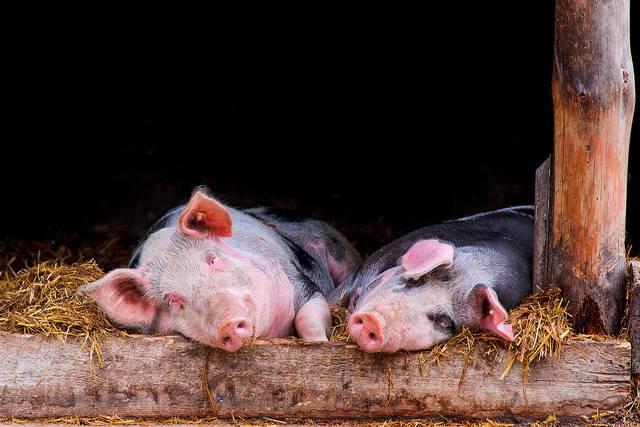
Last month, Reuters profiled Smithfield Foods' new bioscience unit, where the company will explore a range of applications for its meat production business. Among the potential opportunities are new methods for tissue regeneration and the development of human organs for transplant surgeries.
So, are we entering a brave new world of extending human life at the expense of animal welfare, or is this simply a smart long-term business decision? After all, it is not as if the U.S. pork industry is suffering: The sector is bullish on its short term prospects and expects a 3.5 percent increase in production this year.
As any business school professor would tell you, venturing outside a company’s core business -- or “adjacencies” -- can result in great rewards, but it comes with great risks. Church and Dwight, a 170-year-old cleaning products and consumer brands company, found great success with its Arm & Hammer brand, which long ago extended from baking soda into toothpaste, deodorant and cleaning products. On the other hand, ventures such as Trump Steaks, Trump Vodka and Trump University have not fared quite so well.
Nevertheless, as Sarah Zhang of The Atlantic pointed out this week, pig products have long been transformed into human healthcare solutions.
A century ago, childhood diabetes was a death sentence. Then, researchers at Eli Lilly figured out that insulin extracted from pig pancreases could save lives. Former first lady Barbara Bush underwent open heart surgery eight years ago in order to receive a replacement heart valve from a pig. Heparin, a common blood thinner, is extracted from porcine intestines and has been on the market since the 1930s. And Smithfield already has a business selling pork byproducts, such as materials that end up as the base for treating medical conditions such as hypothyroidism and deep vein thrombosis, to pharmaceutical firms.
Smithfield’s new bioscience arm comes as scientific research indicates that pigs and humans have more in common genetically than previously thought. And earlier this year, Salk Institute for Biological Studies in La Jolla, California, confirmed that it is possible to grow human tissue within a pig. Those vested in this science often say they are driven by the ongoing shortage of organ donations, despite years of public awareness campaigns.
This new business division will find Smithfield partnering with scores of organizations, including universities, pharmaceutical companies and advanced robotics firms, the company said. One such group, the Advanced Regenerative Manufacturing Institute (ARMI), has received funding from the U.S. Department of Defense, which seeks progress on the replacement and repair of human tissues to treat soldiers during armed combat.
Not so fast, say some observers.
The meat industry, and pork producers in particular, lag behind when it comes to animal welfare in the view of the sector’s most vocal critics. Awareness campaigns by organizations such as the Humane Society have convinced more companies to push their suppliers to change how they treat their animals. The development of even more robust treatment options in the name of human health will excite many future patients, yet it will raise questions from animal rights activists of just how far society should go in harvesting animals in the name of public health.
And whether these porcine-based organs have their DNA modified or become human-porcine “chimeras,” companies such as Smithfield, healthcare providers and consumers will need to have a frank discussion over the ethics involved in this new medical revolution.
Image credit: Tambako the Jaguar/Flickr

Leon Kaye has written for 3p since 2010 and become executive editor in 2018. His previous work includes writing for the Guardian as well as other online and print publications. In addition, he's worked in sales executive roles within technology and financial research companies, as well as for a public relations firm, for which he consulted with one of the globe’s leading sustainability initiatives. Currently living in Central California, he’s traveled to 70-plus countries and has lived and worked in South Korea, the United Arab Emirates and Uruguay.
Leon’s an alum of Fresno State, the University of Maryland, Baltimore County and the University of Southern California's Marshall Business School. He enjoys traveling abroad as well as exploring California’s Central Coast and the Sierra Nevadas.














